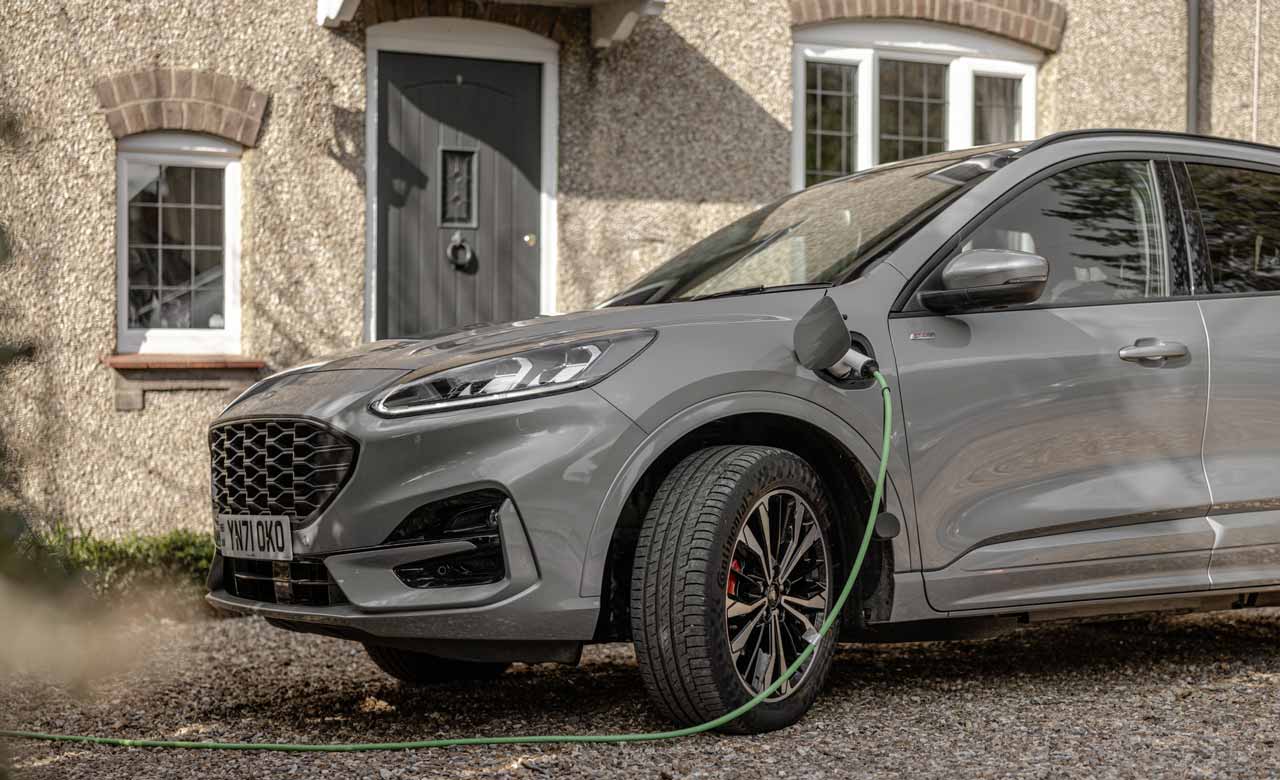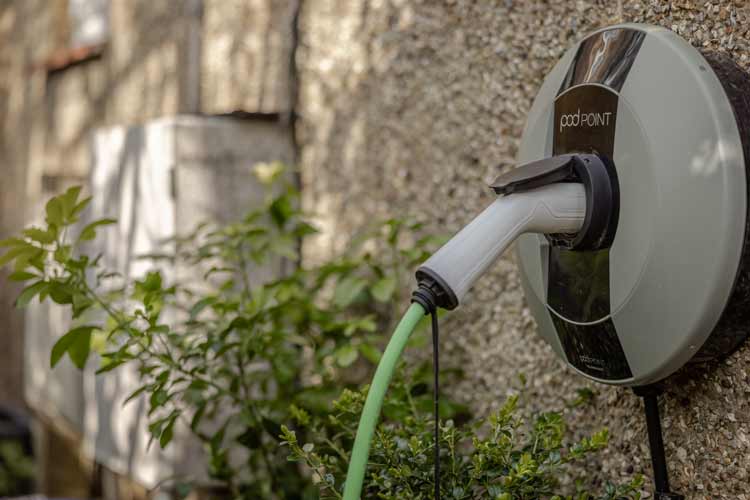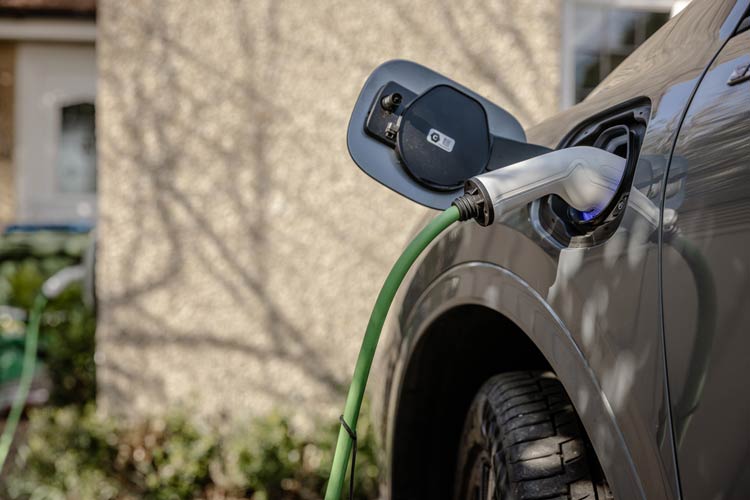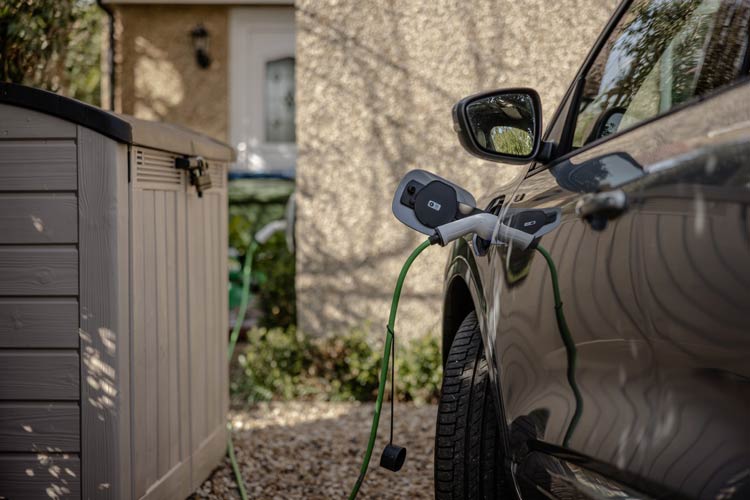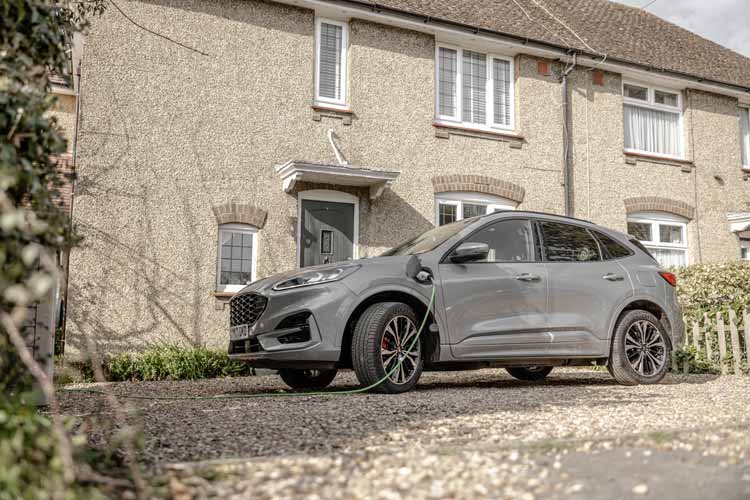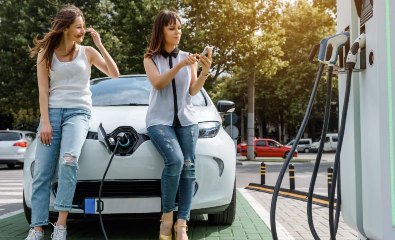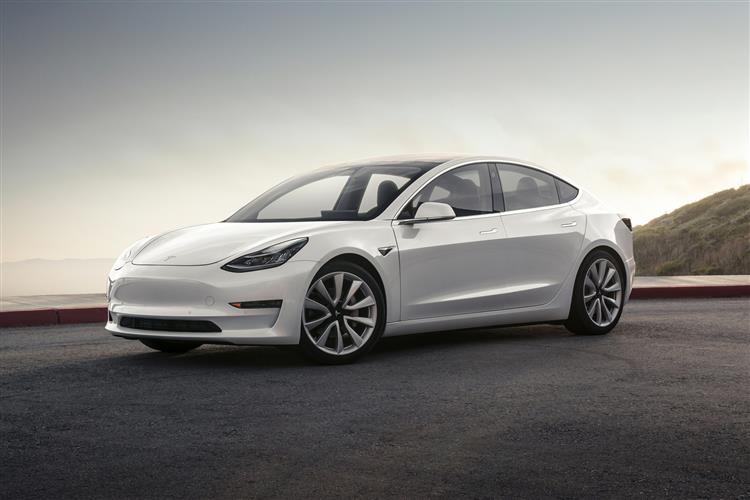By Matt Robinson
So you’re thinking of buying an electric car and you’ve already done your research on rapid public charging at direct current (DC) connections. But how do you go about charging your EV when it’s parked up at home? What are the options? And what are the speeds like? Here’s our definitive guide to home EV charging.
In This Article:
Can I Charge An Electric Car At Home? Is Home Charging AC Or DC? What Is Destination Charging? Can I Charge An Electric Car At Home With A 3-Pin Plug? What Is A Wallbox Charger? Can I Fully Charge My EV At Home? How Fast Is Home Charging? Can You Get Rapid Home Wallbox Chargers? Is Home Charging Cheaper Than Public Charging? Can Plug-In Hybrids Be Charged On Home Wallboxes?
Can I Charge An Electric Car At Home?
Yes, you can charge an electric car at home, but there a few things you'll need: off-road parking, like a garage or driveway, and you'll need power. For efficiency, you'll also want a to get a wallbox - which we'll explain in detail a little later on.
Is Home Charging AC Or DC?
Home charging, 1 of 2 types of EV charging known collectively as ‘destination charging’ (the other being at your place of work), is done on alternating current (AC). The domestic power supply in the UK is all AC and so the onboard charger (OBC) on your EV is specifically fitted purely to convert this AC current into DC to charge its own lithium-ion battery. AC charging is therefore slower than DC, mainly because the electricity supply in the first place is of a lower kilowatt (kW) rating than it is through high-voltage DC points and also because the car has to convert AC to DC within its own systems before storing the energy in its battery.
What Is Destination Charging?
This means you charge the EV when it is parked up for long periods of time and you are not in the car or waiting near it while it charges. In essence, destination charging is rated as either ‘slow’ (up to 3.7kW) or ‘fast’ (7-22kW), done through AC connections, and usually takes place at either your home residence or place of work. The idea here is that, for example, you plug the car in when you get home from work at 6pm or thereabouts, and then leave it on charge throughout the rest of your evening and then while you sleep during the night, only disconnecting it when you are ready to go to work the next day. This means the car is only charged at your destination, not on your journey (that would be public charging on rapid DC connections, you see, forcing you to wait with the car while the battery replenishes).
Can I Charge An Electric Car At Home With A 3-Pin Plug?
You can indeed charge an EV with a 3-pin plug, using what is known as a Type 2 Mode 2 cable. This includes a Type 2 7-pin connector at one end of the cable and a 3-pin domestic plug at the other, with a control box in the middle of the cable. It is advisable not to use a 3-pin socket as your regular charging method, however, with the use of a dedicated AC wallbox the preferable route to replenishing your battery. If you are using a Mode 2 cable, sometimes known as a ‘trickle charger’ or even a ‘granny charger’, you MUST plug it directly into a wall-mounted domestic socket – do not run a trailing socket out to the car and then plug into that, as the heat generated by charging an EV’s battery is not good for the cabling in the trailing socket and could present a fire risk.
What Is A Wallbox Charger?
A wallbox charger is a dedicated box-shaped device, to be mounted on an exterior wall (hence the name), that must be wired into your property’s domestic mains supply by a professional electrician. It is a small weatherproof unit with a Type 2 connecting socket inside it, and a wallbox provides faster charging rates than the Mode 2 3-pin method.
There are 2 types of wallbox, which are tethered and untethered.
-
Tethered means there is a built-in connector cable in the wallbox, which slots directly into your EV.
-
Untethered is the more common type. This means you need to use a Type 2 Mode 3 charging cable – simply a length of heavy-duty cabling with 2 7-pin Type 2 sockets at either end of it – to connect your EV to the wallbox.
Most manufacturers of EVs will provide you with a Type 2 Mode 3 cable as part of the standard specification when you buy the vehicle; indeed, the Type 2 Mode 2 ‘trickle charger’ is also sometimes included in an EV’s purchase price, as well.
Can I Fully Charge My EV At Home?
Charging at home or work is the one place where you can take your EV’s battery right back up to 100% charge. At destination chargers there is an 80% cap on DC rapid charging. This is used as a protection mechanism that slows down the rapid rate of charging when the battery is at 4/5ths capacity, in order to prevent the battery overheating and thus shortening its life.
But AC charging doesn’t overheat the battery anything like as much as DC charging, and in truth EV manufacturers recommend that you use slower AC charging on a more regular basis than DC in order to prolong the battery’s operational life. In essence, home/destination charging is positively encouraged among EV drivers, rather than being seen as a ‘last resort’. Read our dedicated article for more tips for caring for your EV battery.
How Fast Is Home Charging?
If you use a trickle charger (Type 2 Mode 2 cable), the maximum charging speed is 2.3kW. Using simple maths, if your EV’s battery has a 50kWh usable capacity, then at 2.3kW – assuming a steady, stable charging connection throughout – it will take approximately 22 hours (50 divided by 2.3) to fully recharge the battery from 0-100% state-of-charge (SoC).
Install a 3.7kW wallbox, however, and that same battery will go from 0-100% in 13 hours; probably about the time it would take for you to plug in when you get home from work, right through to the time you’ll be ready to go to work the next morning (e.g., 6pm-7am).
However, most home wallboxes are 7.4kW rated, which means they’ll do the battery up from 0-100% SoC in less than 7 hours. That means that, if you’re on a lower electricity rate overnight (known as an ‘Economy 7’ tariff), you only have to plug the EV in at the very end of the night, just before you go to bed, and then you’ll get the cheapest possible electricity rates to fully recharge your car’s battery pack.
Can You Get Rapid Home Wallbox Chargers?
There are a few which can run at either 11- or 22kW, but for that you will need triple-phase electrics at your domestic property. Most UK homes are on single-phase electrics, limiting the output to 7.4kW, hence why a 7.4kW wallbox is so common. However, if you have triple-phase electrics, you can attempt to fit a faster AC wallbox to your property (again, wired in only by a trained electrician/professional wallbox installer).
Despite this, bear in mind the speed of charging is also limited by the EV’s OBC. Mostly, on pure EVs, these are rated at 7.4- or 11kW, so even if you fit a 22kW home wallbox to your triple-phase property, your EV will still only charge at a maximum 7.4- or 11kW rate accordingly. However, some bigger EVs with the largest battery packs – good examples being the Porsche Taycan and the Audi e-tron GT, with 93.4kWh lithium-ion units – come with the option to uprate the standard 11kW OBC to a 22kW item at vehicle ordering time. For reference, our example 50kWh-battery EV would take less than 3 hours to charge from 0-100% on a 22kW AC connection if it could take advantage of that charging speed.
It should be noted that the OBC on a pure EV only functions when charging through an AC connection. Rapid charging on a DC connection of 50kW or more bypasses the OBC and means the car is not limited to 7.4- or 11kW charging speeds any longer. That said, all EVs will have a maximum charging rate even on DC connections – so if you have a car which can only charge at 76kW, like an MG ZS EV, and you hook up to a 100kW DC charger, then the maximum rate you’ll get remains 76kW.
Is Home Charging Cheaper Than Public Charging?
Simple answer: yes. According to Pod-Point, the average typical energy rate of a single kWh of electricity in the UK is around 28p, dropping to 11p for those on Economy 7 tariffs overnight. That means it would cost you roughly £14 for a full charge of your EV at 28p/kWh, and £5.50 at 11p/kWh. So not only is home charging better for the long-term health of your EV’s battery, it is also easier on your wallet than using DC charging on a regular basis – which normally charges around 50p/kWh for 50kW connections, and more for the ultra-rapid 100kW-plus chargers.
Can Plug-In Hybrids Be Charged On Home Wallboxes?
If you’ve not gone ‘full EV’ yet and have stuck with a plug-in hybrid electric vehicle (PHEV), AC destination charging is your only real option. There are exceptions to this rule – Jaguar Land Rover’s latest PHEVs, including the Range Rover Evoque P300e, can connect to DC, for instance – but in general, most PHEVs only charge on AC connections. This is because PHEVs typically have battery packs which are sub-30kWh, so rapid charging is simply not necessary. On a 7.4kW domestic wallbox, and assuming they have an OBC that can take the fastest charging rate possible, the vast majority of PHEVs will fully replenish their battery packs in anything between 90 minutes and 2 hours of being hooked up to the mains electricity.
Want to know more? Take a look at our handy guide on everything you need to know about charging electric cars.

